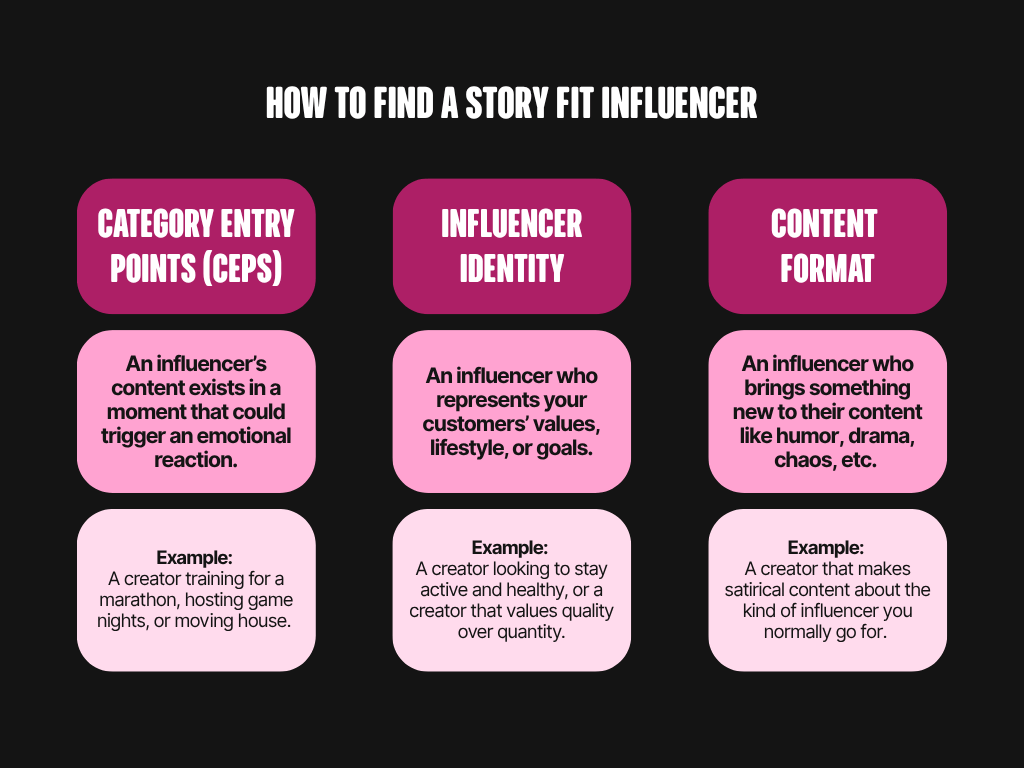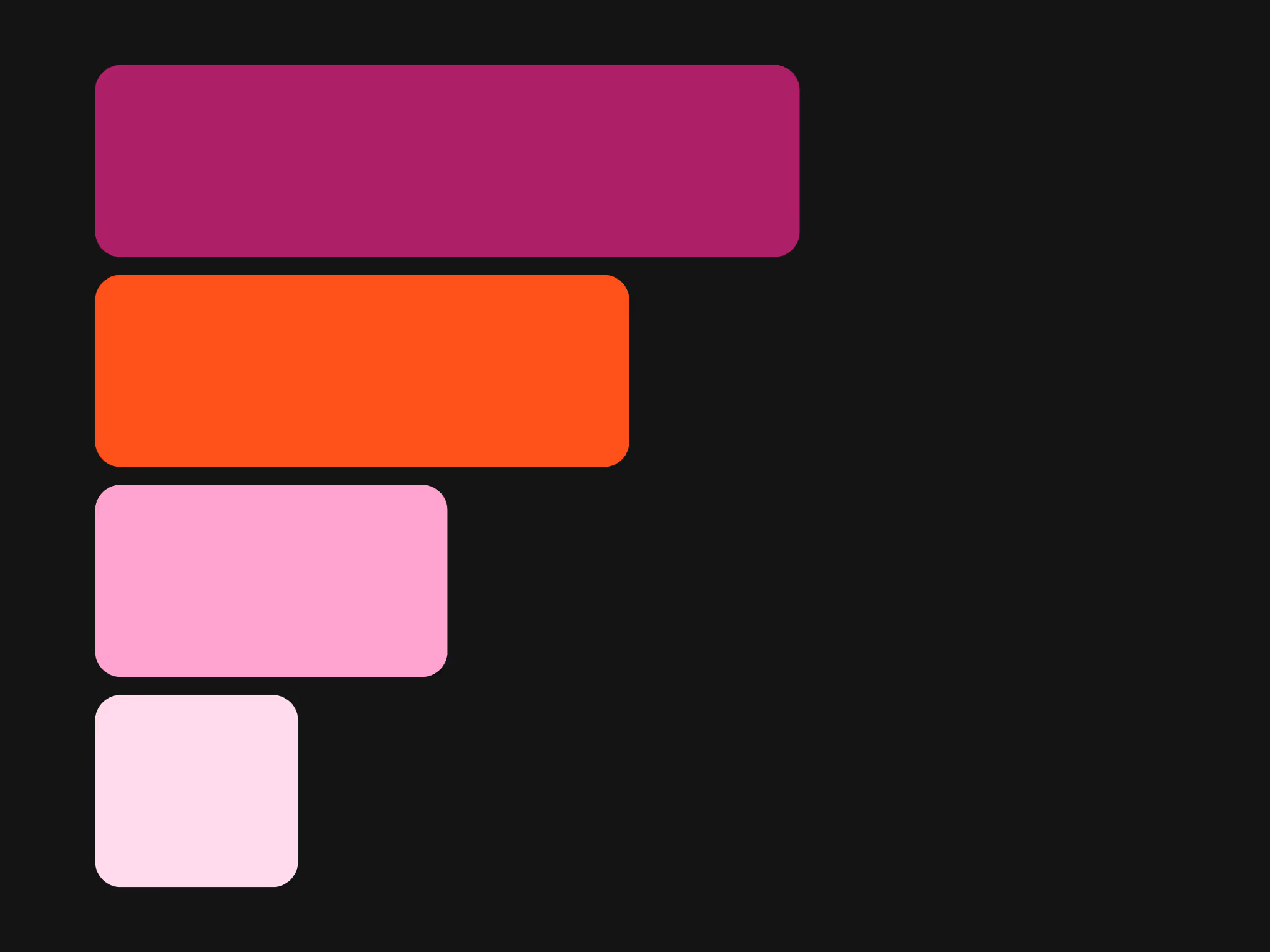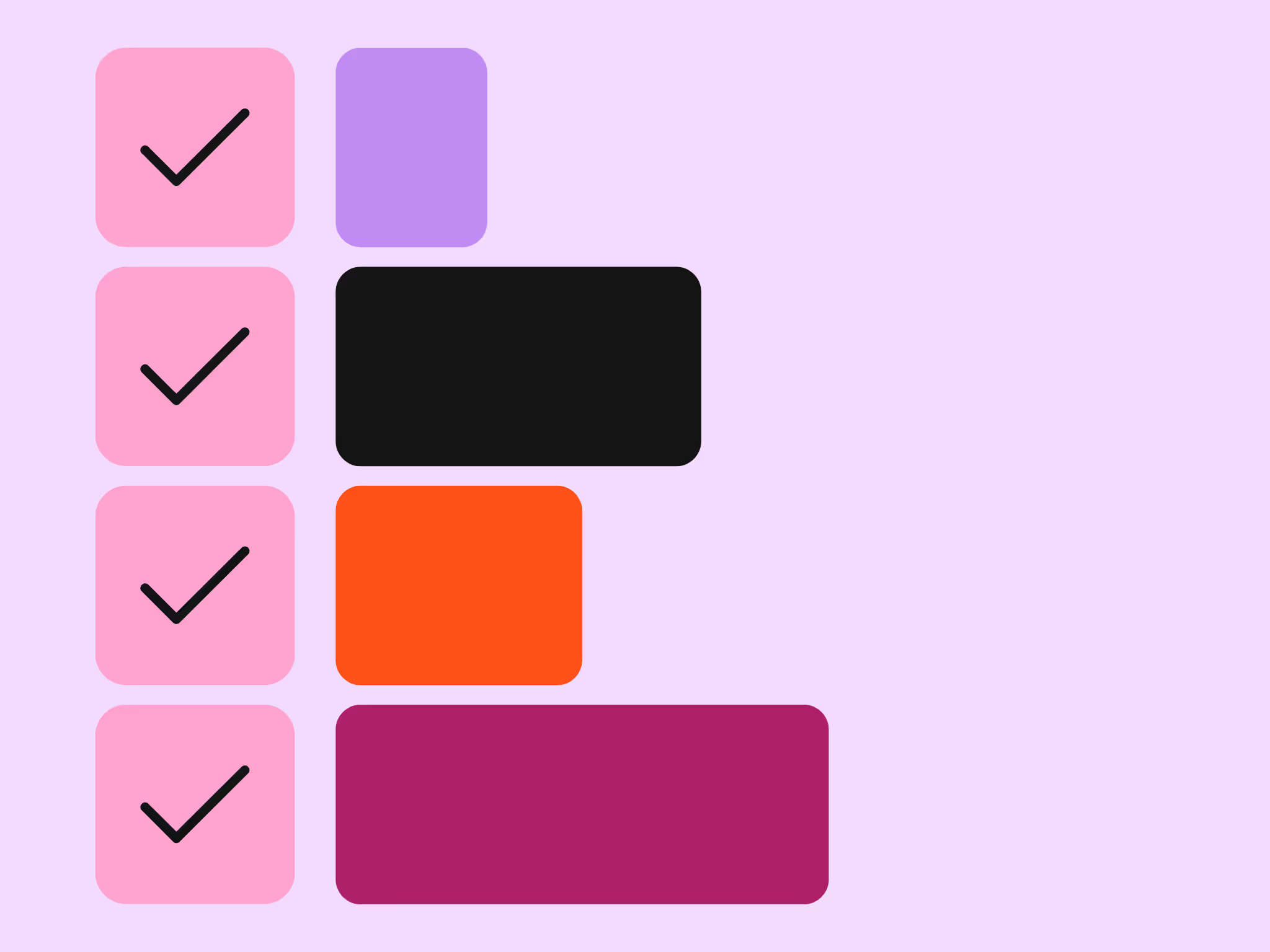Title: The Overfitting Fallacy: How Story Fit Influencers Fix Your Search Problems
Meta Title: How to Find Story Fit Influencers

When brands struggle to find good creators, the problem usually isn’t volume. It’s vision.
There are millions of incredible creators out there – with even more popping up every day.
But if you’re looking for a shopping list of criteria, and only filtering for product-match (people who are already in your niche, or talking about products like yours) – you’re going to hit a wall.
We call it overfitting. We shamelessly stole borrowed 💅 the concept from mathematics, and it means when you’re interpreting data too literally to be able to account for outliers or predict the future.
In layman’s terms, it means your influencer search criteria is too strict, and you need to chill out.
Enter, story fit influencers. They’re those misfit influencers who don’t work on paper but perform surprisingly well.
I’m going to go deeper into what overfitting really looks like, how it affects your influencer search, and teach you how to find those story fit influencers who are going to help you tell your brand story.
What is overfitting?
Overfitting boils down to just being too strict about what an influencer needs to have to be considered a “good brand fit.”
It’s when you’re looking for:
- Only female influencers between the ages of 29.5 and 31 and three months
- Who need to have an engagement rate between 2-5%
- Who need an audience in the Orne region of Normandy, France
- Who also need to talk about specifically tax filing software,
- Who have a blood type O positive, and…
The list goes on.
By overfitting your influencers:
- Reducing opportunities: You’re narrowing your pool of potential influencers – you won’t be able to scale and amplify your reach.
- Boring your audience: With stagnant reach, you’ll suffer from audience-fatigue, and your target will just scroll on past. Not to mention, your content will likely look like everyone else’s – meaning you won’t create the noise you want to.
- Increasing competition: You’re looking for The Obvious Choice™, which means you’ll also be competing with your competitors who also want to work with The Obvious Choice™.
- Paying more: Influencers who are in high demand will have higher fees – meaning a collaboration may not make sense for you.
For example, let’s say you sell protein bars. If your entire search strategy revolves around “people who review protein bars,” you’re going to be competing in a tiny niche, with every other company that sells protein bars.
Not to mention, you might even end up competing with larger brands who have bigger budgets, more products, and deeper relationships with the creators in that tiny niche.
You’ll fight and scrape and claw for the tiniest crumb of your audience’s attention – who have “seen it all before,” and will instantly compare you to everyone else also selling protein bars, asking themselves, “Right, but why should I care about your bars specifically?”
They’ve already heard your talking points, your brand angles, and the promised outcomes your products provide. They’ve just heard it from your competitor instead.
After all – how many ways can you really sell a protein bar?
Enter, the story fit influencer.
What is a story fit influencer?
A story fit influencer is a creator who can tell your brand’s story in a way that feels authentic to them, and will resonate with their (read: your) audience.
There are three different ways to go about this:
- You can tap into category entry points
- You can base this off of an influencer’s identity
- You can look for a particular format of content

Category entry points:
Category entry points (or CEPs) are those real-life triggers that make someone think “I could use something like that.”
They’re moments in time where your product is super relevant and timely. They give your brand emotional and contextual relevance – even if the creator hasn’t talked about your product niche before.
Leading with those emotional triggers dramatically opens up the people who are suddenly “a brand fit.”
Let’s circle back to protein bars. You’re not looking for just “people who review protein bars.” You’re not even just looking for “fitness influencers.”
- You’re looking for “people who are training for a marathon.”
- You’re looking for “people who are losing weight by managing their macros.”
These aren’t markets – they’re moments. And they’re moments that you can use to make your audience the hero of your story, and your product is what they need to complete that story.
Identity:
Identity refers to creators who represent your customer’s values, lifestyle, or goals – even if they’re not in your particular niche. The idea is to look for an influencer who is your ideal customer profile (ICP).
So, for example, circling back to the protein bar example, a fitness influencer ends up being The Obvious Choice™.
Instead, who needs your product? What are their goals and aspirations?
- You’re looking for “a mom who is looking to get back in shape after having her first kid.”
- You’re looking for “an older person looking to stay active and healthy.”
- You’re looking for “vegetarians and vegans who need to supplement their protein intake.”
The idea is that you want an influencer in whom the audience sees themselves. Identity is powerful – because when you make something, or someone part of your identity, that is a hard bond to break.
By going for creators whose identities fit your ICP, you’re integrating your brand into that identity.
Format:
This one can be a little harder to pin down. It refers to the influencer’s style of content – which could be their humor, drama, chaos, etc.
The idea is reframing your product in a fresh, resonant way. These are those unique content creators that just got it. That “It Factor” is what makes their audiences stop, watch, absorb, and engage – every time.
So again, instead of going for The Obvious Choice™:
- You’re looking for “that one ultra buff gym bro that makes satirical content about how ridiculous gym-bro content is.”
- You’re looking for “chaotic ADHD content creators who make neurodivergant comedy content about forgetting to eat.”
- You’re looking for “that mom who makes lifestyle content about parenting, sneaking a chocolate protein bar as her ‘healthy me-time’ from the pantry of her kitchen because otherwise her kids will want ‘candy’ too.”
For these creators, you’re pretty much just cutting them loose. They have the creativity to present your product and brand in a way that’s going to resonate with their audiences.
This means less time briefing for you – because you’re just letting the influencer take the reins. And chances are, they’re going to be the best captain of that collaboration.
Developing a story fit strategy means you’ll reach more creators, and get better, more unique content than simply going for the same creators everyone else is going for.
They may not be in as high-demand as The Obvious Choice™, and if they’re not already working with your competitors, chances are your product and brand will feel more fresh and resonant with their audiences.
How to vet a story fit influencer
Don’t confuse reach with resonance.
Too many marketers get burned because they pick creators based on numbers or vibes – but not both.
You don’t need the biggest name, or the trendiest format. You need someone who moves people, and moves the right people. That’s what vetting really comes down to.
Finding an interesting influencer is only half the battle. Vetting is where you transform your strategy into success.
Put away those criteria shopping lists. They have no power here.
Instead, we’re going to ask ourselves 3 main questions about any influencer:
- Do they have reach (and are they actually engaging anyone)?
- Do they have relevance (are they speaking to the right people)?
- Do they have resonance (will their message land emotionally)?

These are the three-layer fit test of story fit.
Think of this like a tripod. A tripod is only upright with a solid foundation. If you remove any of the three legs, it all gets wobbly.
But, if all three are present, even imperfectly, you’ve got a solid bet. And your job as an influencer marketer is to make solid bets again and again and again.
Do they have reach (and are they engaging anyone)?
This is your quantitative layer. You want to measure the actual attention your products might get.
Here’s what you check:
- Engagement rate: which needs to be proportionate to the size of the influencer. A 3.7% engagement rate is extraordinary for a 3M-follower account. On a 3K-follower account? It’s just fine. Always compare to creators of a similar size to benchmark engagement.
- Average views: This is especially important on video-first platforms. Are their videos actually seen?
- Platform breakdown: Which platform is their strongest? Does it correspond to the platform you’re prioritizing?
- Content formats: Where are they strongest? Is it Reels, Stories, Voiceovers? Do they shine when talking to the camera? Does this format fit your goals?
Do they have relevance (are they reaching the right people)?
This is the qualitative layer – where the context of a creator's content and targeting matter the most.
Here’s what you check:
- Audience demographics: Age, gender, location, interests, etc. Does this match your ideal customer?
- Audience authenticity: Are these real people? Or is it a ghost town of bots and fake engagement? Are they reaching average Joes, or is it a sea of other influencers?
- Follower geography: Are they popular in a region you sell to? (Most influencers will reach people across several countries – but the majority should fall where you operate)
- Past brand collaborations: Who have they already worked with? Are they over-saturated, or would your product feel fresh? Are they mostly working with niche brands or big players?
Most of the time – an audience is going to make or break a collaboration. If they’re not going to move relevant people, what’s the point?
(Unless you’re that one guy from our survey who targeted the wrong audience location, but ended up promoting the influencer’s content as an ad in the right location – but that feels messy)
Do they have resonance (do they move people)?
This is the emotional layer – it’s where that gut feeling comes in.
Here’s what you’re looking for:
- Comment section: Are they engaging with their audience? Do people trust them? Do they respond?
- Branded content tone: Are sponsorships integrated naturally? Do they feel forced? How well do they mesh with their organic content? How does the audience respond to branded content?
- Confidence on camera: Can they engage you? Do they capture your attention and keep it? Are they compelling, warm, and/or trustworthy?
- Content tone & delivery: Does their voice align with your brand? Do they feel relatable to your ideal customers?
- Category entry point alignment: Do they talk about the right moments? (Ex: morning routines, moving house, stress relief, personal expression, etc.)
- Values & lifestyle fit: Are they someone who your audience aspires to be – or, at minimum, trusts?
And the most important part: Gut check: Are you comfortable with this person representing your brand?
If not, it’s not a fit.
Influencers don’t have to be perfect on each of these points – but they absolutely do need to hit these minimum three layers. If so, collaboration might make sense for you.
Maintaining a diverse portfolio
Okay okay – yes. That sounds like some Finance Bro advice. But hear me out.
Influencer marketing is kinda like investing in the sense that nothing is a sure bet. Even an influencer you’ve worked with before who overperformed at the time could have a bad week (or get got by the algorithm).
And if you’re only investing in one kind of influencer, and the algorithm does what it does, or if it doesn’t land, or insert any other variable that could happen, your campaign is going to fall flat.
Investors have a few safe, but predictable and slow growth investments. They usually take a smaller slice of their capital, and put it into something that has bigger growth, but a little more risk. Then, they take a tiny portion of their money and put it into something very risky, but could turn out huge rewards if it does well.
So, think like an investor:
- Have your safe bets: These are the creators with steady performance and great audience alignment.
- Add in a few misfits: These are maybe some smaller creators who are living your category entry points.
- A dash of format specialists: These are your creators who nail Reels or have a cult following on Stories, or who have a specific, creative style.
- A sprinkle of niche voices: These aren’t the loudest creators, but they have a deeply engaged specific community.

Each creator will bring you something unique – whether it’s reach, engagement, storytelling style, audience trust, etc.
The point isn’t to get every single post to go viral or bring in a ton of revenue. That’s not realistic no matter who you work with. But, you want to build a system where enough of the content will perform well enough to drive consistent, scalable results.
So if 70% of your content performs as expected, 20% over delivers, and 10% flops – that’s completely healthy.
But Whitney, why wouldn’t I just put everything in the safe bets and just be reasonably sure that it’ll all work?
Because you won’t learn anything. And you’ll end up right back where you started, looking for one specific kind of influencer and hitting a wall.
When you diversify your content portfolio, you:
- Reduce risk: You’re not putting all your eggs in one basket and hoping for chickens come spring. Even if your sure-bets all tank, you’d still have other creators that can still bring in revenue for you.
- Increases learning: You can see if other kinds of content formats, tones, and audiences resonate with your brand and products. This means you can replicate those factors in the future (and maybe even move some of your riskier influencers to sure-bets).
- Supports scaling: A diverse portfolio is scalable. Creator unicorns aren’t. When you think like an investor, you don’t fold yourself into a box or have issues finding new creators to work with.
- Frees you from perfectionism: You get to bring strategy back into your process, in lieu of obsession. We prefer strategy.
And with a system like that, your overall strategy is stronger, and has a better chance of performing.
Moving forward with story fit influencers
What I’ve learned from marketers is that a lot of influencer search and vetting is developing and trusting your gut.
And you absolutely should – but also back it up with a system. You’ll want the numbers to verify that an unconventional creator has legs. Don’t use it as a replacement shopping list – instead, try to find people that are 75% of the way there.
This is where Modash can help. With Modash, you can search for every influencer with more than 1000 followers – and we do mean all of them.
You’ll also get deep data on each creator, including audience demographics, engagement rates, and you’ll even be able to see previously sponsored content – all from the same dashboard. You’ll finally be able to say goodbye to endless scrolling, wondering if this interesting creator even reaches your ideal audience.
But don’t take my word for it. Try Modash absolutely free for 14 days (without even getting out your credit card).





.avif)

.avif)
